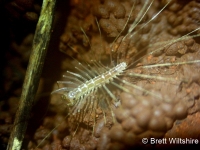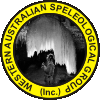 |
Expedition images are HERE |
In 2016, a grant made available to Dr W.F. (Bill) Humphreys of the W.A. Museum allowed him to organise an expedition to Cape Range to expand an already long running project looking at the genetic data of the cave invertebrates.
Up until 2016 the small amount of funds available only allowed him to focus on one main group, the blind millipedes of the genus Stygiochiropus. These millipedes have revealed an interesting distribution of genes into provinces whereby populations are isolated or semi-isolated from each other by natural barriers such as gorges. On this trip the aim was to collect specimens from other families of troglobites (animals obliged to dwell within the cave environment) such as Schizomida (micro-whip scorpions), pseudoscorpions (not particularly closely related to real scorpions, although they bear a distinct similarity), cave spiders, isopods (commonly known as woodlice) and etc. The trip was very successful with many specimens collected from a variety of caves ranging from shallow pits a few metres deep to caves over 50 m deep and many hundreds of metres in horizontal extent. It may take several years for the data from the specimens to be processed and to reveal its many secrets, such as degree and time of divergence from other populations, and in fact whether the divergence actually mimics that of the millipedes.
The participants were Dr Humphreys, his assistant Julianne Waldock, both from the W.A. Museum and WASG members Luana Dwyer, Fran Head, Ian Collette, Brett Wiltshire and Darren Brooks.
Darren made the following video of the expedition - well worth viewing ...















